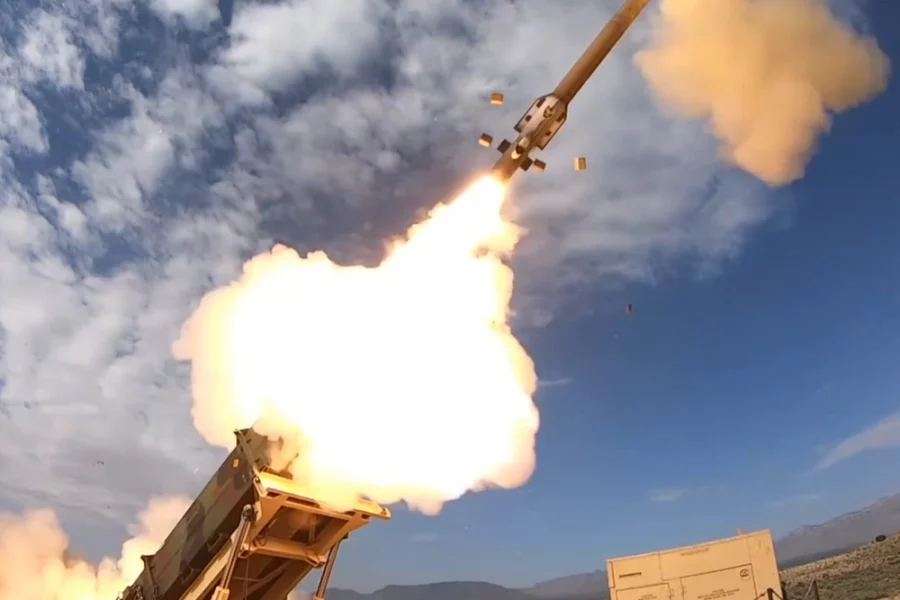The Pentagon should give the Air Force the air base defense mission and the resources to carry it out, Secretary Frank Kendall said Nov. 1 at the Airlift/Tanker Association Symposium in Grapevine, Texas.
“There is one thing we must move faster on: our progress against the full range of threats to our bases. This is a joint responsibility that we have been working on with our Army colleagues, and that we hope to accelerate,” Kendall said during a keynote address. “Frankly, I would be comfortable with the Department of the Air Force taking on the … defense of air bases as an organic mission, if the needed resources—human and financial, etc.—were made available.”
Under the 1948 Key West agreements that set the core roles and missions of the services, the Army is supposed to defend air bases. It’s a mission that’s gotten tougher in recent years as China has built a formidable number and variety of long-range precision-guided missiles likely intended to rain destruction on U.S. bases in the Indo-Pacific, Kendall said.
This threat has prompted the Air Force to pursue the concept of Agile Combat Employment, in which the service plans to deploy small teams of Airmen capable of moving quickly to remote or austere bases, to multiply the number of targets China must shoot at and reduce the chances of a knockout blow at any one base.
But the Army has not committed the resources necessary to match the ACE model. Its Patriot and Theater High Altitude Air Defense (THAAD) systems are effective, but batteries are relatively few in number and there aren’t enough missiles to go around for the number of bases ACE will require. The Air Force has complained with increasing urgency that the Army is not taking the mission seriously enough, even as the Army encroaches on the Air Force’s core mission of long-range strike by developing costly hypersonic missiles with limited potential effects. The Air Force believes its forward forces are ill-protected.
The challenge of countering a large-scale missile strike has been drawn into sharp relief by Iran’s recent missile volleys toward Israel, which were thwarted by an international defensive effort from land, sea, and air. Such a level of effort would likely not be sustainable in a large Indo-Pacific theater war.
The Air Force and Army both have experimented with lasers and directed energy weapons for air base defense, the idea being that many, low-cost defensive shots can impose the greatest cost of such combat on the attacker instead of the defender.
Air Force Chief of Staff Gen. David Allvin, in a virtual event with the American Enterprise Institute on Oct. 31, said the Air Force used to have permissive access to forward locations, but “that is no longer the case.”
“The challenge is doubled or tripled by not only having to go the tyranny of distance, but being able to survive and protect the equipment along the way, into in the beginning of the fight and during the fight,” he said.
“We are looking at things … [that] increase the survivability of the bases from which we operate. And then in the midst of a conflict, how we get the right equipment to the right place at the right time is not only a matter of protecting it with hardened shelters and maybe camouflage, concealment and deception, but it’s also connectivity, to have that situational awareness,” and be able to react quickly when China points “its next salvo of long-range missiles to attack.”
